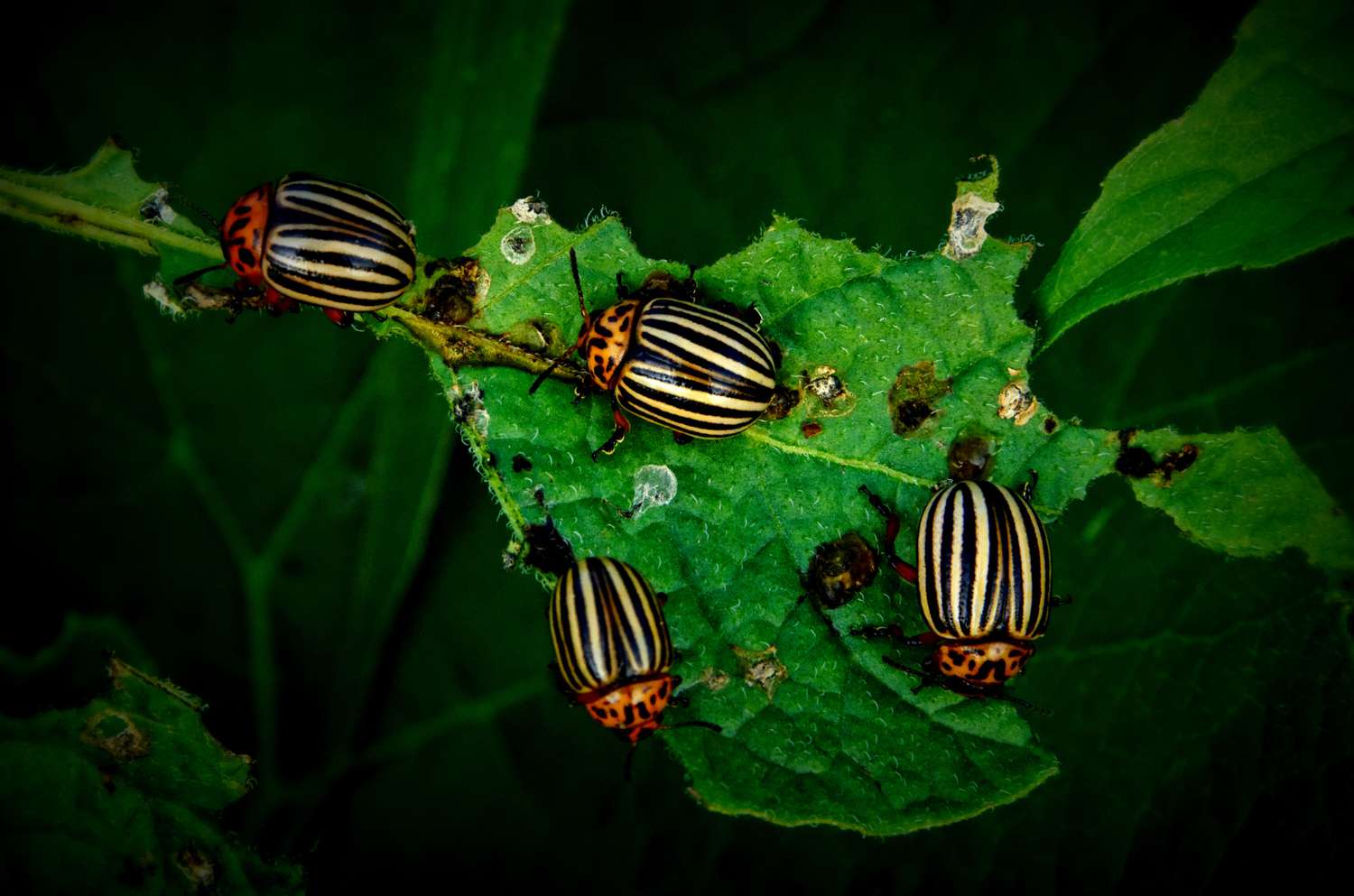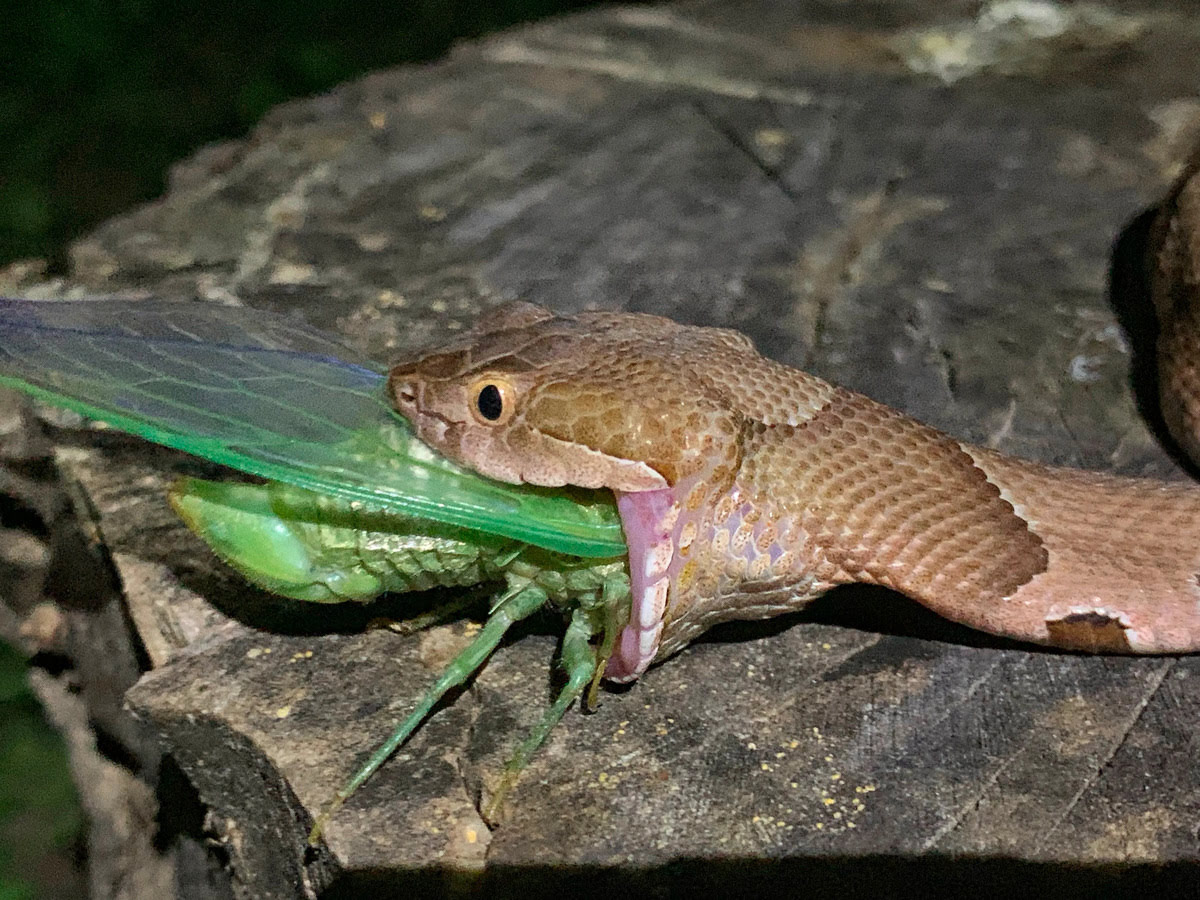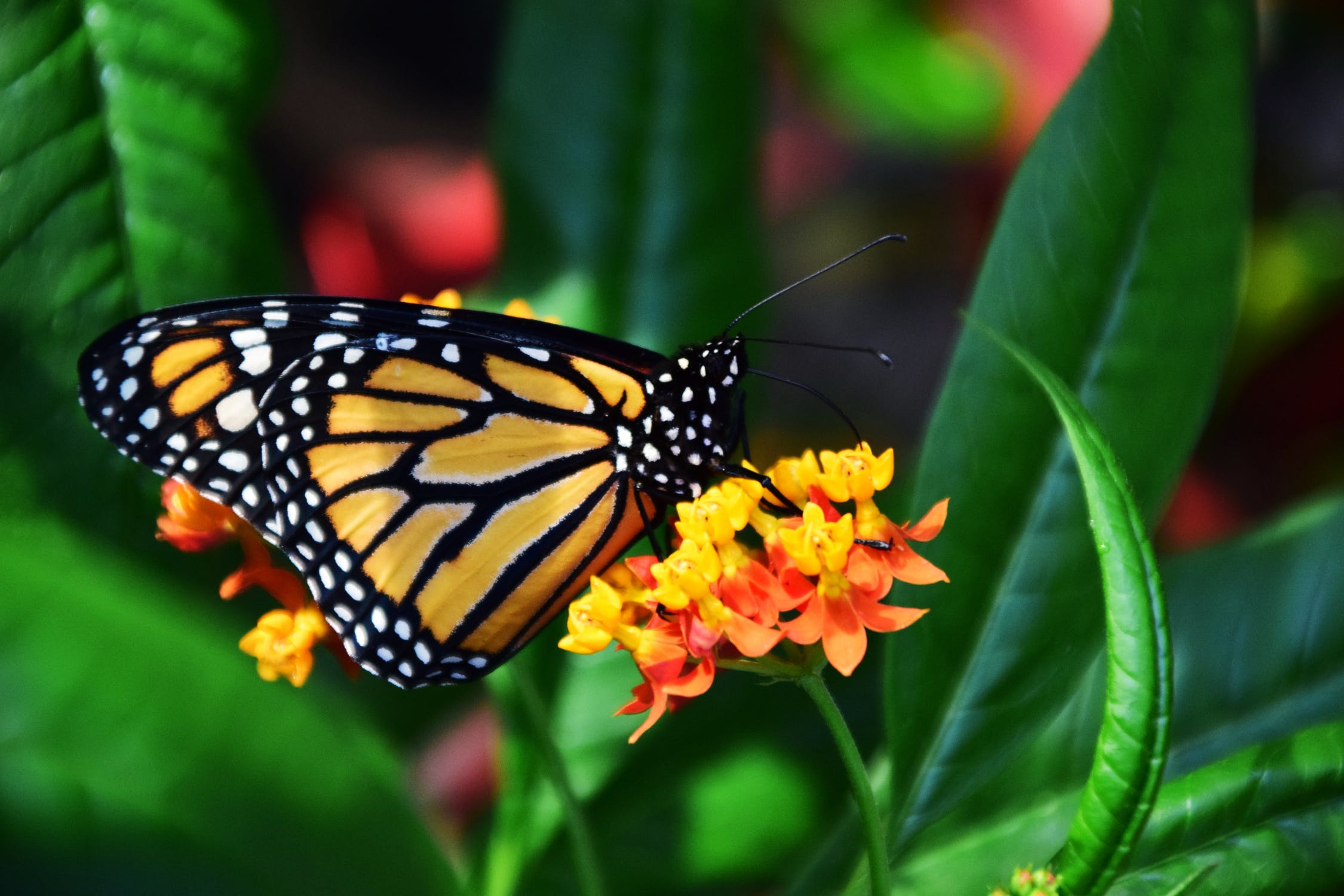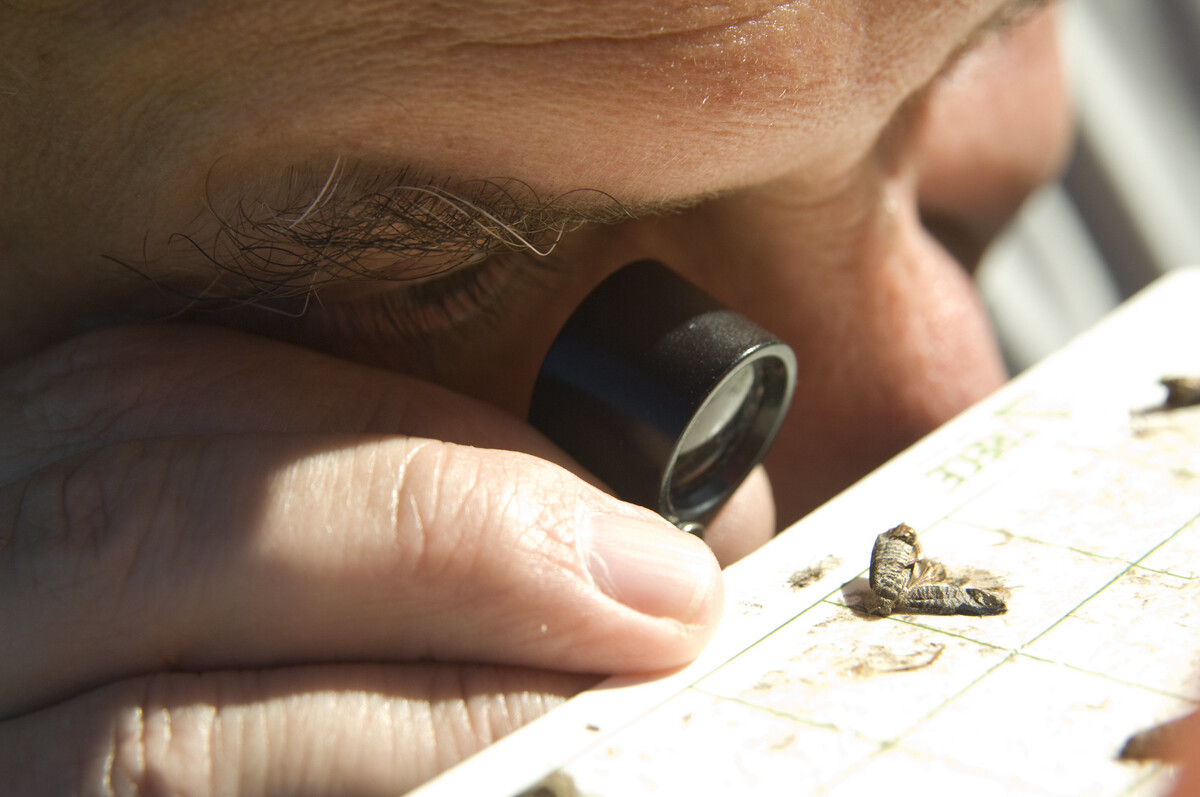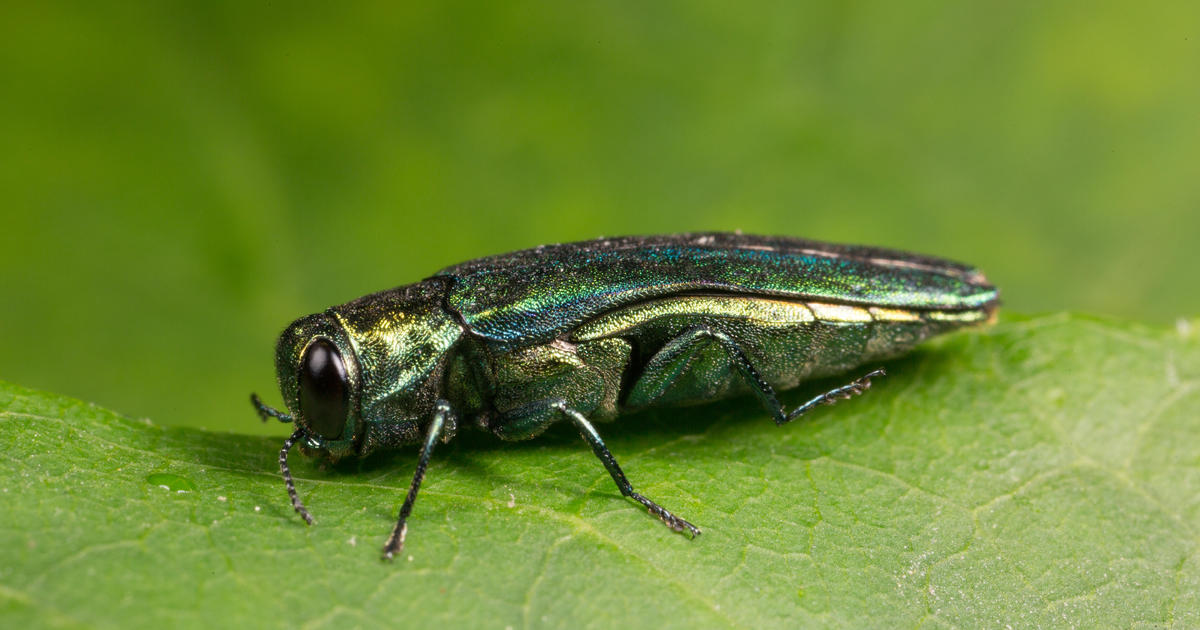Home>Gardening News and Trends>Latest News>Which Birds Eat Insects


Latest News
Which Birds Eat Insects
Modified: January 22, 2024
Discover the latest news on which birds eat insects. Learn about the fascinating behaviors and adaptations of these avian insectivores.
(Many of the links in this article redirect to a specific reviewed product. Your purchase of these products through affiliate links helps to generate commission for Chicagolandgardening.com, at no extra cost. Learn more)
Table of Contents
Introduction
Birds are a diverse group of creatures that play a vital role in maintaining the ecological balance of our planet. While many species of birds have varied diets, some specialize in feeding on insects. These insect-eating birds are not only fascinating to observe but also serve a crucial purpose in our ecosystem by helping to control insect populations.
Insects are abundant in nature and can be found in a myriad of habitats. While some insects are beneficial, others can be destructive to crops, gardens, and even human health. This is where insect-eating birds come in. They act as natural predators, keeping insect populations in check and preventing outbreaks that could have devastating effects.
The presence of insect-eating birds in an area can help reduce the need for chemical pesticides, promoting a more environmentally friendly approach to pest control. This makes these birds valuable allies in agricultural settings, gardens, and even urban areas.
Furthermore, the role of insect-eating birds extends beyond pest control. As they feed on insects, they contribute to nutrient cycling and the overall health of ecosystems. Their presence helps to maintain the delicate balance of nature, ensuring the survival and reproduction of various plant species.
In this article, we will explore the fascinating world of insect-eating birds, their adaptations, diet, and their impact on ecosystems. We will also touch on the importance of conserving these bird species to maintain the ecological balance and promote biodiversity. So, let’s dive into the fascinating world of birds that feast on insects!
Importance of Birds in Insect Control
The presence of birds that feed on insects plays a crucial role in maintaining the delicate balance of ecosystems. Here are several reasons why these birds are valuable in insect control:
- Natural Pest Control: Insect-eating birds act as natural predators, keeping insect populations in check. By feeding on insects, they help reduce the occurrence of pest outbreaks that could have harmful effects on crops, gardens, and even human health. Their presence can decrease the need for chemical pesticides, promoting a more sustainable approach to pest management.
- Targeted Predation: Insect-eating birds have specialized feeding behaviors and adaptations that enable them to target specific insect species. For example, birds like the Eastern Bluebird and the Tree Swallow are adept at catching insects in mid-air, while others, like woodpeckers, forage for insects hidden underneath tree bark. This targeted predation helps control the populations of pest insects more effectively.
- Preventing Ecosystem Disruption: Some insect species, if left unchecked, can cause significant disruptions in ecosystems. For instance, outbreaks of certain insect pests can lead to defoliation of trees or destruction of crops, leading to cascading effects on other organisms in the ecosystem. By controlling insect populations, insect-eating birds help prevent such disruptions and maintain the overall health of ecosystems.
- Supporting Biodiversity: Insect-eating birds contribute to biodiversity by playing a role in the intricate food web of ecosystems. Their feeding habits create a diverse and balanced environment, as they consume different types of insects at various life stages. This promotes the survival of a wide range of plant species by preventing any one insect group from dominating and potentially threatening the biodiversity of the ecosystem.
- Ecological Services: The services provided by insect-eating birds extend beyond pest control. As they feed on insects, they contribute to nutrient cycling by consuming insects that have fed on plants. They also help with pollination as they move from flower to flower in search of insects. These services further enhance the health and resilience of ecosystems.
The importance of birds in insect control cannot be overstated. Their natural inclination to feed on insects and their specific adaptations for this purpose make them invaluable allies in maintaining the balance of nature. By preserving and protecting insect-eating bird species, we can foster healthier ecosystems and reduce our reliance on chemical pesticides, leading the way toward a more sustainable and harmonious coexistence with the natural world.
Insect-eating Bird Species
There are numerous bird species that have adapted specifically to feed on insects as a primary part of their diet. These birds display a variety of foraging techniques and can be found across different habitats around the world. Here are a few notable insect-eating bird species:
- Swallows and Martins: Swallows and martins are well-known for their aerial acrobatics and their ability to catch insects on the wing. These birds have slender, agile bodies and long, pointed wings that allow them to maneuver swiftly through the air. Common species include the Barn Swallow, Tree Swallow, and Purple Martin.
- Warblers: Warblers are a diverse group of songbirds that are often associated with woodlands and shrubby areas. While warblers have a varied diet that includes insects and other small invertebrates, they are particularly adept at gleaning insects from foliage and branches. Examples of insect-eating warbler species include the Black-and-White Warbler, Yellow Warbler, and Ovenbird.
- Tyrant Flycatchers: Tyrant flycatchers are a large group of birds found primarily in the Americas. These birds use a sit-and-wait strategy, perching on branches or exposed areas and flying out to catch insects in mid-air. They are known for their keen eyesight and quick, agile flight. Prominent species in this group include the Eastern Phoebe, Great Crested Flycatcher, and Vermilion Flycatcher.
- Woodpeckers: Woodpeckers are typically associated with their drumming behavior and their ability to excavate holes in trees. While they are known for feeding on tree sap and insects found underneath bark, woodpeckers also play a significant role in insect control. They use their strong, chisel-like bills to uncover hidden insects in tree crevices. Notable insect-eating woodpecker species include the Downy Woodpecker, Pileated Woodpecker, and Northern Flicker.
- Flycatchers: Flycatchers, similar to tyrant flycatchers, are known for their exceptional aerial hunting skills. They have a distinct flycatching behavior, perching on branches or other elevated spots and darting out to catch insects in mid-air. These birds have a characteristic facial expression and mouth shape that allows them to snatch insects with precision. Some well-known flycatcher species include the Eastern Kingbird, Western Kingbird, and Olive-sided Flycatcher.
These are just a few examples of the many insect-eating bird species found worldwide. Each species has its own unique adaptations and foraging strategies, demonstrating the incredible diversity of nature’s insect controllers. Their specialized diets and hunting techniques make them efficient at keeping insect populations in check, contributing to the health and balance of ecosystems. By appreciating and conserving these insect-eating birds, we can ensure their continued role in maintaining the delicate harmony of our natural world.
Adaptations of Insect-eating Birds
Insect-eating birds have developed a range of remarkable adaptations that allow them to efficiently locate and capture their prey. These adaptations can be observed in their physical characteristics, behaviors, and specialized senses. Here are some notable adaptations of insect-eating birds:
- Beak Shape and Size: Different species of insect-eating birds have evolved beaks of various shapes and sizes to suit their specific feeding strategies. Some species, like flycatchers and swallows, have wide beaks that enable them to catch flying insects with precision, while others, like warblers and woodpeckers, have slender, pointed beaks that facilitate foraging for insects hidden in foliage or tree bark.
- Aerial Agility: Birds that catch insects on the wing, such as swallows and certain flycatcher species, possess exceptional aerial agility. They have long, pointed wings and streamlined bodies that allow them to fly swiftly and change direction quickly, making it easier for them to pursue and capture their flying prey.
- Camouflage and Mimicry: Some insect-eating birds, such as certain warbler species, have plumage that blends with their surroundings, providing camouflage as they forage for insects among leaves and branches. Additionally, some birds, like the Eastern Whip-poor-will, have patterns and colors that mimic tree bark or leaf litter, helping them remain inconspicuous while hunting.
- Perching and Hunting Techniques: Birds like tyrant flycatchers and flycatchers employ specific perching and hunting techniques to maximize their insect-catching abilities. They often choose exposed perches to have a clear view of their surroundings, allowing them to detect insects in flight. When an insect is spotted, they swiftly dart out to catch it and then return to their perch to consume it.
- Keen Eyesight and Hearing: Many insect-eating birds have highly developed senses that aid in locating their elusive prey. They have keen eyesight, allowing them to spot small insects from a distance, as well as the ability to detect insect sounds or vibrations. This sensory acuity enables them to pinpoint insects hidden in vegetation or detect the movement of flying insects.
- Song and Vocalizations: Some insect-eating birds use their vocalizations not only for communication but also as a hunting strategy. For example, the Eastern Whip-poor-will produces distinctive sounds at night that can attract nocturnal insects, which the bird then catches and consumes.
These remarkable adaptations demonstrate the incredible diversity and evolution of insect-eating birds. Each species has its own unique set of traits and behaviors that enable them to thrive in their specific ecological niches. Their adaptations have allowed them to successfully exploit the abundant insect resources in their habitats, ensuring their survival and role as natural insect controllers. By studying and appreciating these adaptations, we gain a deeper understanding of the intricate ways in which birds and insects have coevolved over time.
Diet of Insect-eating Birds
Insect-eating birds have a highly specialized diet, primarily consisting of various types of insects and other invertebrates. While the specific dietary preferences may vary among species, there are several common insect groups that form the main source of food for these birds. Here are some key components of the diet of insect-eating birds:
- Flying Insects: Many insect-eating birds are skilled aerial hunters and specialize in catching flying insects. This includes species like swallows, flycatchers, and nightjars, which snatch insects such as flies, mosquitoes, moths, and beetles mid-flight. They are adapted to agile flight and have developed techniques to capture these fast-moving prey.
- Caterpillars and Larvae: Caterpillars and larvae are a rich source of nutrition for insect-eating birds. They are soft-bodied and relatively slower-moving compared to flying insects, making them easier targets. Birds such as warblers, wrens, and thrushes actively forage for these larvae in vegetation, including trees, shrubs, and grasses.
- Beetles and Bugs: Beetles and bugs are abundant insects that provide substantial sustenance for insect-eating birds. This group includes species like woodpeckers, nuthatches, and titmice, which feed on bark-dwelling beetles and bugs. They use their strong beaks and specialized foraging techniques to extract insects from tree trunks and branches.
- Ants and Termites: Ants and termites are a fascinating food source for many insect-eating birds. Certain species like antbirds and antwrens are known for their unique association with ants, actively seeking them out in the leaf litter and tree trunks. They may even follow army ant swarms, taking advantage of the disturbed insects and prey items flushed out by the moving swarm.
- Spiders and Invertebrates: In addition to insects, insect-eating birds also consume spiders and other small invertebrates. These creatures provide a protein-rich alternative to insects and are often found in the same habitats. Birds like thrushes, warblers, and vireos actively search for spiders and other invertebrates among foliage and ground-level vegetation.
It’s important to note that while insects form the mainstay of their diet, insect-eating birds may also consume other food items such as fruits, nectar, and even small vertebrates on occasion to supplement their nutrition.
By specializing in different types of insects and utilizing various hunting strategies, insect-eating birds occupy unique niches in their ecosystems. Their ability to target specific insect groups helps regulate populations, maintain ecological balances, and contribute to the overall health and diversity of the natural world.
Impact of Insect-eating Birds on Ecosystems
Insect-eating birds play a significant role in shaping and maintaining ecosystems. Their presence and feeding habits have a profound impact on various ecological processes. Here are some key ways in which insect-eating birds influence ecosystems:
- Regulation of Insect Populations: The primary role of insect-eating birds is controlling insect populations. By preying on insects, they help regulate population sizes and prevent outbreaks of pest species. This natural form of pest control reduces the need for chemical pesticides and promotes a more sustainable approach to managing insect pests, particularly in agricultural and gardening settings.
- Promotion of Plant Health: Insect-eating birds indirectly benefit plants by preventing excessive insect damage. When populations of herbivorous insects are kept in check, plants can flourish and maintain their health, ensuring a stable food source for other organisms. Additionally, birds may aid in seed dispersal while foraging, contributing to the spread and diversity of plant species.
- Contribution to Nutrient Cycling: As insect-eating birds consume insects, they help recycle nutrients within ecosystems. Insects serve as intermediate consumers, feeding on plants and other organic matter. By consuming insects, birds transfer these nutrients up the food chain, contributing to the overall nutrient cycling process and the health of the ecosystem.
- Reduction of Disease Vectors: Some insects act as disease vectors, transmitting pathogens to plants, animals, and humans. Insect-eating birds can help reduce the population of disease-carrying insects, thus lowering the risk of outbreaks and the spread of diseases within ecosystems. Their role in curbing disease transmission is particularly crucial in maintaining the health of wildlife populations and minimizing risks to human health.
- Promotion of Biodiversity: The presence of insect-eating birds enhances biodiversity within ecosystems. By controlling insect populations, these birds prevent any one insect species from dominating and potentially threatening the diversity of plant species. Furthermore, the variety of insect-eating bird species itself contributes to the richness and complexity of biodiversity, adding to the ecological resilience of ecosystems.
- Indicators of Environmental Health: Insect-eating birds serve as indicators of environmental health and the overall quality of ecosystems. Their population dynamics and foraging patterns can reflect changes in insect abundance and ecosystem conditions. By monitoring the health and population trends of these birds, scientists can gain valuable insights into the status and functioning of ecosystems.
Overall, insect-eating birds play an integral role in maintaining the balance and functioning of ecosystems. Their predatory activities, regulation of insect populations, and contributions to nutrient cycling support the overall health and diversity of plants, animals, and the environment. By recognizing and valuing the ecological services provided by these birds, we can work towards their conservation and the preservation of the delicate relationships that sustain our natural world.
Conservation of Insect-eating Bird Species
The conservation of insect-eating bird species is crucial for maintaining healthy ecosystems and preserving biodiversity. Here are some key actions and considerations for ensuring the conservation of these birds:
- Habitat Preservation: Protecting and preserving the habitats of insect-eating bird species is paramount. This includes conserving natural areas such as forests, wetlands, grasslands, and other habitats that provide food, shelter, and breeding sites for these birds. Efforts should focus on preventing habitat loss, degradation, and fragmentation through measures like land-use planning, protected areas, and sustainable land management practices.
- Reducing Pesticide Use: Pesticides can have detrimental effects on both insect-eating birds and their insect prey. Minimizing the use of chemical pesticides in agricultural practices and promoting the adoption of integrated pest management techniques can help protect the food sources and habitats of these birds. This shift towards more sustainable farming methods benefits not only the birds but also promotes healthier ecosystems and human well-being.
- Creating Nesting Sites: Providing suitable nesting sites is essential for the breeding success and population growth of insect-eating bird species. Implementing nest box programs can help offset the loss of natural cavities and provide additional nesting opportunities. These initiatives can be targeted towards specific species in decline or implemented more broadly to support a range of insect-eating birds.
- Conservation of Insect Diversity: To ensure the availability of abundant and diverse insect populations for insect-eating birds, it is important to conserve the broader insect community. Protecting insect habitats, promoting pesticide-free zones, and encouraging the planting of native plants that support a variety of insect species all contribute to maintaining healthy and robust food sources for insect-eating birds.
- Combating Climate Change: Climate change poses a significant threat to both insect populations and the habitats of insect-eating birds, as it alters temperature and precipitation patterns, disrupts ecosystems, and affects food availability. Mitigating climate change through reducing greenhouse gas emissions, promoting renewable energy sources, and supporting climate adaptation strategies can help safeguard the long-term survival of these bird species.
- Research and Monitoring: Continuous research and monitoring efforts are essential to assess the populations and habitat needs of insect-eating birds. Robust monitoring programs can detect population trends, identify threats, and provide valuable data for conservation planning and targeted interventions. Research can also contribute to understanding the ecological roles of these birds and inform conservation strategies.
The conservation of insect-eating bird species is not only vital for their own survival but also for the overall health and resilience of ecosystems. By preserving their habitats, reducing pesticide use, creating nesting sites, conserving insect diversity, addressing climate change, and investing in research and monitoring, we can ensure the long-term sustainability of these important bird species. Every conservation action we take contributes to the preservation of our natural heritage and the continued functioning of the intricate web of life.
Conclusion
Insect-eating birds play a vital role in our ecosystems by controlling insect populations, promoting plant health, and contributing to nutrient cycling. Their specialized adaptations, diverse diets, and ecological services make them invaluable allies in maintaining the delicate balance of nature.
By regulating insect populations, insect-eating birds help prevent pest outbreaks and reduce the need for chemical pesticides, promoting a more sustainable and environmentally-friendly approach to pest control. Their presence contributes to the health of ecosystems by promoting plant diversity, reducing disease transmission, and supporting nutrient cycling.
Conservation efforts for insect-eating bird species are crucial for preserving the delicate relationships within ecosystems. Protecting their habitats, reducing pesticide use, creating suitable nesting sites, conserving insect diversity, addressing climate change, and conducting research and monitoring are essential strategies for their long-term survival.
As individuals, we can also contribute to the conservation of insect-eating birds by creating bird-friendly habitats in our own gardens, supporting local conservation initiatives, and raising awareness about the importance of these birds in our ecosystems.
Insect-eating birds are not just fascinating creatures to observe, but also key players in maintaining the harmony of our natural world. Appreciating and protecting these bird species ensures their continued role in insect control, the promotion of biodiversity, and the overall health and resilience of our ecosystems.


